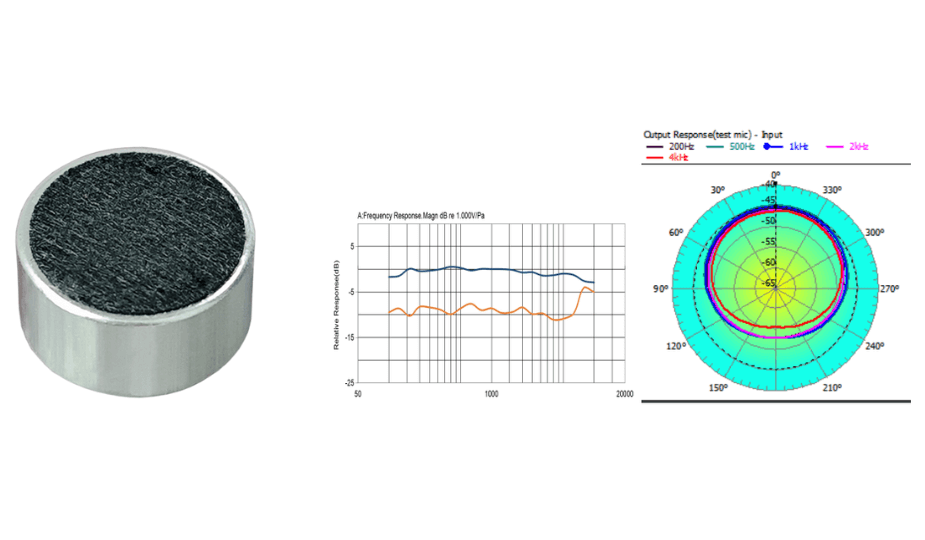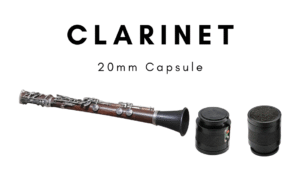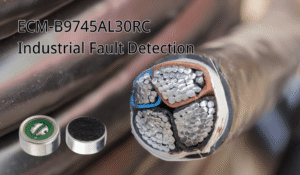
This article provides a component-level technical overview of how 3-pin wide-cardioid electret microphone capsules align with the requirements of boom microphones used in many headset and voice-communication devices.
The content focuses purely on microphone-element characteristics and integration considerations from a supplier perspective, without referencing specific device designs or customer details.
1. The Role of a 3-Pin ECM in Boom-Mic Circuits
A 3-pin ECM separates power (V+), signal output, and ground. From a microphone-component perspective, this structure can be advantageous when:
- The PCB layout includes compact circuits or multiple functional modules
- A stable biasing environment is needed to maintain consistent sensitivity
- The designer prefers clearer electrical separation between signal and power lines
This separation simplifies integration in products where the microphone shares space with other electronic components, helping maintain stable signal quality.
2. Why Wide-Cardioid Directivity Matches Boom-Mic Usage
Wide-cardioid directivity offers a balance between directional control and tolerance to movement. From an acoustic perspective, it aligns well with typical boom-mic operating conditions:
2.1 Allows moderate movement without dramatic level change
A boom microphone is positioned close to the mouth, but slight user movement is common. A wide-cardioid pattern helps maintain stable audio pickup across small angle variations.
2.2 Controls surrounding noise without being overly narrow
Compared with an omnidirectional pattern, wide cardioid reduces noise from behind the microphone. Compared with a very tight cardioid pattern, it avoids extreme sensitivity to small angle changes, helping maintain consistent voice capture.
2.3 Predictable behavior for devices with basic processing
In devices that incorporate simple audio processing or noise-handling functions, a wide-cardioid capsule provides a stable acoustic input that supports consistent results across units.
3. Typical Product Environments (Component-Level Perspective)
From a microphone-element integration viewpoint, 3-pin wide-cardioid ECMs are commonly applied in product types such as:
- Boom microphones on headsets
- Wired or wireless communication headsets
- Voice devices for meetings or general communication
- Personal audio accessories requiring close-talk pickup
These categories generally require stable speech pickup and controlled directional characteristics, which align well with wide-cardioid electret capsules.
4. Example Component: wide-cardioid ECM capsule
Below are the representative specifications of this capsule:
- Model: ECM-B9750UL45-T3-127
- Dimensions: 9.7 × 5 mm
- Directivity: Wide Cardioid
- Sensitivity: -45 dB ±2 dB
- Impedance: 1 kΩ
- S/N Ratio: 72 dB
- Max SPL: 127 dB
- Operating Voltage: 4.5 Vdc
- Current Consumption: 600 μA
- Frequency Response: 100 Hz ~ 10 kHz

For more details and datasheet, see the electret capsule product page.
A 3-pin wide-cardioid electret microphone capsule is a practical choice for many boom-mic designs because it provides clear electrical separation and balanced directional characteristics suitable for close-range speech pickup. This capsule format frequently delivers a reliable combination of acoustic stability and straightforward circuit integration.


